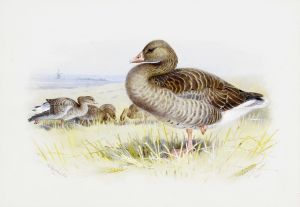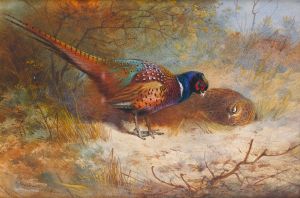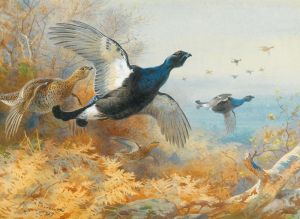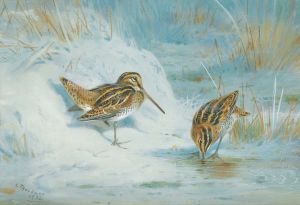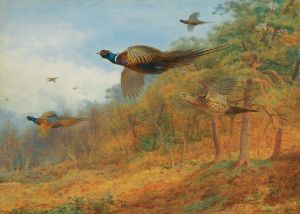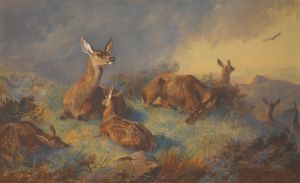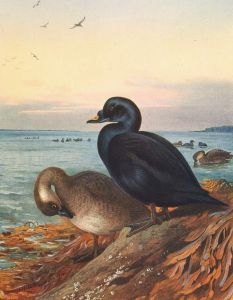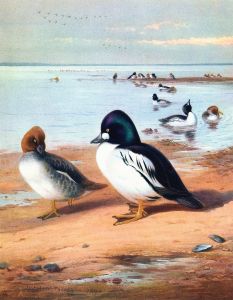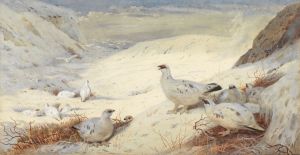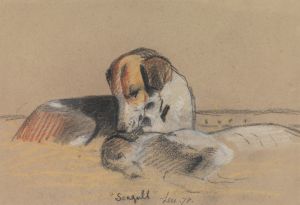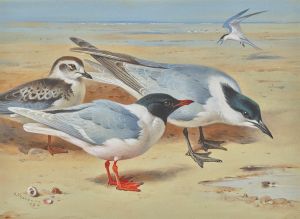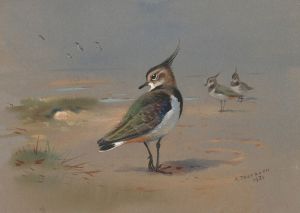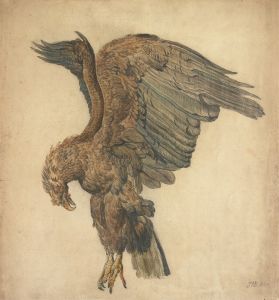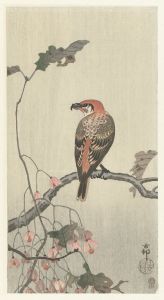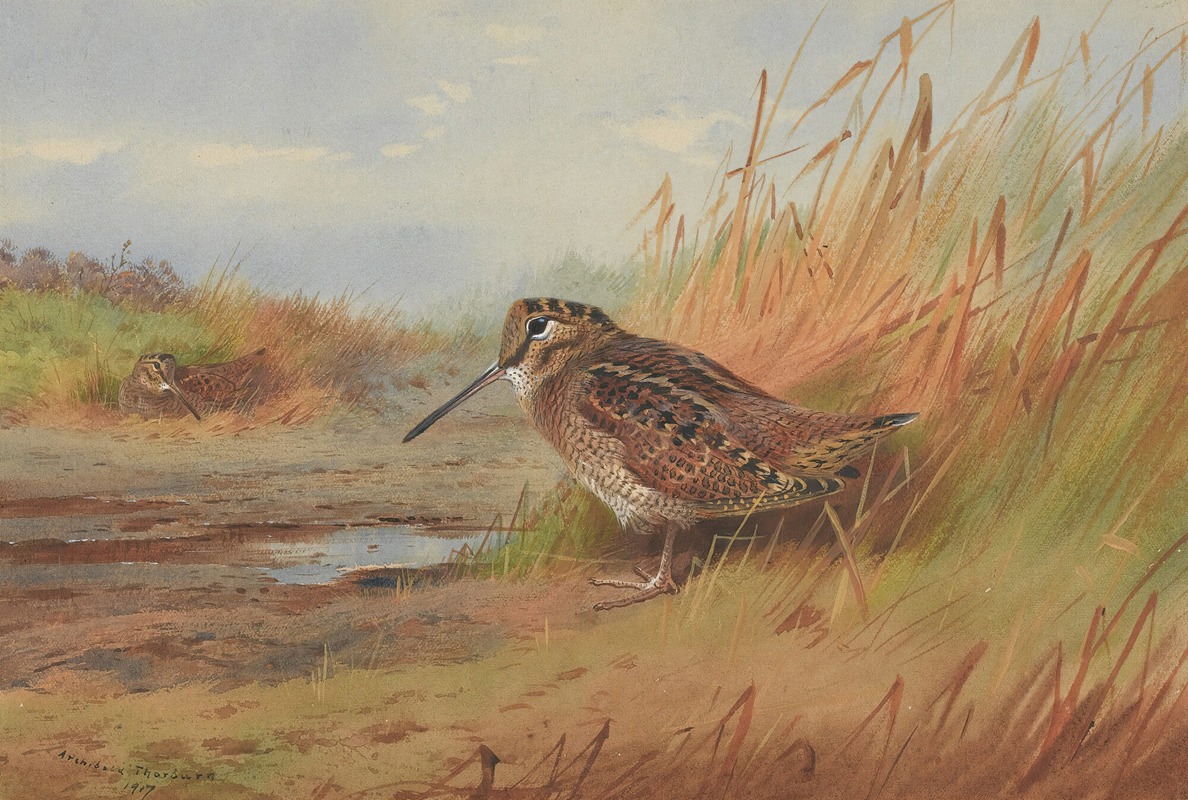
A Woodcock
A hand-painted replica of Archibald Thorburn’s masterpiece A Woodcock, meticulously crafted by professional artists to capture the true essence of the original. Each piece is created with museum-quality canvas and rare mineral pigments, carefully painted by experienced artists with delicate brushstrokes and rich, layered colors to perfectly recreate the texture of the original artwork. Unlike machine-printed reproductions, this hand-painted version brings the painting to life, infused with the artist’s emotions and skill in every stroke. Whether for personal collection or home decoration, it instantly elevates the artistic atmosphere of any space.
Archibald Thorburn was a renowned Scottish artist and bird illustrator, celebrated for his detailed and lifelike depictions of wildlife, particularly birds. Born on May 31, 1860, in Lasswade, Midlothian, Scotland, Thorburn developed a passion for nature and art from a young age. He was the fifth son of Robert Thorburn, a miniaturist to Queen Victoria, which provided him with an artistic environment that nurtured his talents.
Thorburn's work is characterized by its meticulous attention to detail and his ability to capture the essence of his subjects in their natural habitats. He often worked in watercolor and gouache, which allowed him to achieve the delicate textures and vibrant colors that are hallmarks of his paintings. His keen observation skills and dedication to studying birds in the wild contributed to the accuracy and realism of his illustrations.
"A Woodcock" is one of Thorburn's notable works, showcasing his expertise in portraying birds with precision and artistry. The woodcock, a bird known for its distinctive appearance and elusive nature, is depicted in a natural setting, highlighting Thorburn's ability to blend the subject seamlessly with its environment. The painting captures the bird's unique plumage and characteristic long bill, set against a backdrop that reflects its typical woodland habitat.
Thorburn's approach to wildlife art was influenced by the naturalist movement of the 19th century, which emphasized the importance of observing and accurately representing nature. His works were not only artistic achievements but also valuable contributions to ornithology and natural history. Thorburn's illustrations were widely used in scientific publications and field guides, helping to educate the public about bird species and their behaviors.
Throughout his career, Thorburn received numerous commissions from prestigious organizations and individuals, further cementing his reputation as a leading wildlife artist of his time. His paintings were exhibited at the Royal Academy of Arts in London, where they garnered critical acclaim and attracted the attention of art collectors and enthusiasts.
In addition to his artistic accomplishments, Thorburn was an advocate for wildlife conservation. He was a member of several conservation societies and used his art to raise awareness about the importance of preserving natural habitats and protecting bird species from extinction.
Thorburn continued to paint and contribute to the field of wildlife art until his death on October 9, 1935. His legacy lives on through his extensive body of work, which continues to inspire artists and nature lovers alike. "A Woodcock" remains a testament to Thorburn's skill and passion for capturing the beauty of the natural world, reflecting both his artistic talent and his deep appreciation for the wildlife he so meticulously portrayed.





